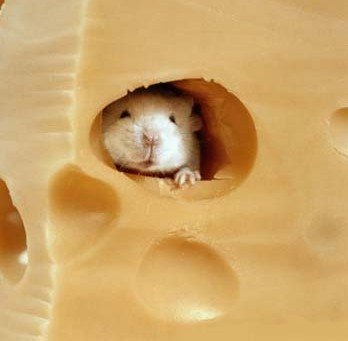When a mouse smells a cat, it instinctively avoids the feline or risks becoming dinner. How? A Northwestern University study involving olfactory receptors, which underlie the sense of smell, provides evidence that a single gene is necessary for the behavior.
A research team led by neurobiologist Thomas Bozza has shown that removing one olfactory receptor from mice can have a profound effect on their behavior. The gene, called TAAR4, encodes a receptor that responds to a chemical that is enriched in the urine of carnivores. While normal mice innately avoid the scent marks of predators, mice lacking the TAAR4 receptor do not.
The study, published April 28 in the journal Nature, reveals something new about our sense of smell: individual genes matter.
Unlike our sense of vision, much less is known about how sensory receptors contribute to the perception of smells. Color vision is generated by the cooperative action of three light-sensitive receptors found in sensory neurons in the eye. People with mutations in even one of these receptors experience color blindness.
“It is easy to understand how each of the three color receptors is important and maintained during evolution,” said Bozza, an author of the paper, “but the olfactory system is much more complex.”
In contrast to the three color receptors, humans have 380 olfactory receptor genes, while mice have more than 1,000. Common smells like the fragrance of coffee and perfumes typically activate many receptors.
“The general consensus in the field is that removing a single olfactory receptor gene would not have a significant effect on odor perception,” said Bozza, an assistant professor of neurobiology in the Weinberg College of Arts and Sciences.
Bozza and his colleagues tested this assumption by genetically removing a specific subset of olfactory receptors called trace amine-associated receptors, or TAARs, in mice. Mice have 15 TAARs. One is expressed in the brain and responds to amine neurotransmitters and common drugs of abuse such as amphetamine. The other 14 are found in the nose and have been coopted to detect odors.
Bozza’s group has shown that the TAARs are extremely sensitive to amines — a class of chemicals that is ubiquitous in biological systems and is enriched in decaying materials and rotting flesh. Mice and humans typically avoid amines since they have a strongly unpleasant, fishy quality.
Bozza’s team, including the paper’s lead authors, postdoctoral fellow Adam Dewan and graduate student Rodrigo Pacifico, generated mice that lack all 14 olfactory TAAR genes. These mice showed no aversion to amines. In a second experiment, the researchers removed only the TAAR4 gene. TAAR4 responds selectively to phenylethylamine (PEA), an amine that is concentrated in carnivore urine. They found that mice lacking TAAR4 fail to avoid PEA, or the smell of predator cat urine, but still avoid other amines.
“It is amazing to see such a selective effect,” Dewan said. “If you remove just one olfactory receptor in mice, you can affect behavior.”
The TAAR genes are found in all mammals studied so far, including humans. “The fact that TAARs are highly conserved means they are likely important for survival,” Bozza said.
One idea is that the TAARs may make animals very sensitive to the smell of amines. Humans may have TAAR genes to avoid rotting foods, which become enriched in amines during the decomposition process. In fact, the TAARs may relay information to a specific part of the brain that elicits innately aversive behavior in animals.
Bozza’s lab has recently shown that neurons in the nose that express the TAARs connect to with a specific region of the olfactory bulb — the part of the brain that first receives olfactory information. This suggests that the TAARs may elicit hardwired responses to amines in mice, and perhaps humans.
“We hope this work will reveal specific brain circuits that underlie instinctive behaviors in mammals,” Bozza said. “Doing so will help us understand how neural circuits contribute to behavior.”
Story Source:
The above story is based on materials provided by Northwestern University, Megan Fellman.





